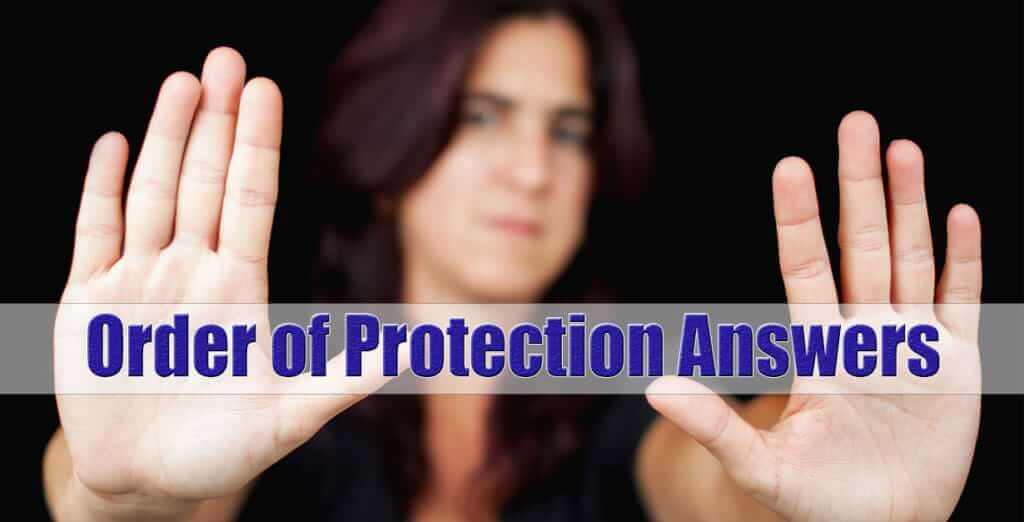As an experienced family law attorney on Long Island I receive a lot of questions about Orders of Protection. Here are answers to some of the most frequently asked questions about orders of protection.
What is an Order of Protection?
If someone close to you, such as an intimate partner or a family member, is abusing you, you may be able to obtain an Order of Protection against them. An Order of Protection is a court order that will require the abuser (the “respondent”) to stop abusing the victim (the “petitioner”), and may also contain additional instructions that the respondent must follow.
How do I know if I need an Order of Protection?
Domestic abuse can take many forms, including physical, emotional and mental. Physical abuse might include kicking, slapping, punching, choking or pushing. Threats of physical harm are also considered abuse. Emotional, mental and financial abuse are also unacceptable forms of abuse. If you are not sure about whether what you are going through is abuse sufficient to obtain an Order of Protection in Nassau or Suffolk county, contact an experienced Long Island Divorce Attorney or a domestic violence agency on Long Island to learn your rights and start the path to protecting yourself from victimization.
How do I get an Order of Protection in Nassau County or Suffolk County?
You can get an Order of Protection by filing a Petition with a Suffolk County or Nassau County court. The petition will contain basic information such as names, addresses, dates of birth of the petitioner and respondent. It will also ask for a physical description of the respondent as well as the relationship between the petitioner and respondent. The petitioner will also need to describe the incidents or behaviors that led to the petition and explain why the Order of Protection is necessary. The petitioner should include as many details as possible about the incident and safety concerns. If the petitioner has a police report regarding a relevant in incident, the police report can be attached to the petition.
Once the petition is filed with the court, the respondent will be served with the papers. The sheriff will serve these papers to the respondent personally so that the court ensures the respondent receives notice of the petition and has a chance to attend the hearing.
At the hearing, a judge will decide whether to grant the order based upon the facts given by the parties or their attorneys.
What kinds of Order of Protection are there?
The order of protection will set forth in detail what the abuser may or may not do, and the specifics of each order will vary depending on the circumstances involved. For example, one order might require an abuser to stay away from the victim completely and refrain from all contact, while another might require the respondent to simply refrain from harassment or abusive behavior.
What if the Petitioner is afraid to see the Respondent in Court?
If the petitioner is afraid of the respondent or has safety concerns, he or she should notify his or her attorney, or if the petitioner is not represented by an attorney, he or she can notify a court officer of the concerns. The court officer may be able to keep the petitioner and respondent in separate areas until it is time to go into the court room, and will stay alert to potential confrontations or safety issues so that everyone is kept safe.
How does an Order of Protection Affect the Respondent’s Criminal Record?
It is a myth that an Order of Protection will go on the criminal record of the respondent. In fact, it does not affect the respondent’s record at all.
How Long do Orders of Protections Last?
Once you file a petition for an Order of Protection, a temporary order will be put in place until a hearing is held. If a final Order of Protection is granted at the hearing, it will be effective for two to five years,
A temporary order of protection will be issued as soon as you file for an order of protection, even before the respondent has been served. The temporary order will last until the next time you appear in court. You may have to appear several times so that the judge can evaluate whether a family offense had been committed. A final order will last for two or five years unless the parties agree on another length of time.
What if the respondent violates the Order of Protection?
If the respondent violates the Order of Protection, the petitioner should call the police. The respondent can be arrested and put in jail.
Contact an Experienced Long Island Family Law Attorney with Questions About Orders of Protection
If you are in a situation where domestic violence is involved, protect yourself by speaking to an experienced Long Island Family Law attorney right away. The family law firm of Hornberger Verbitsky, P.C. can assist you with obtaining an Order of Protection and advocate for you in court, alleviating some of the stress that comes with the process. Contact our office today at 631-923-1910 for a free consultation.
Download Your Free New York Divorce Guide
Our 41-page “Guide to New York Divorce: What You Need to Know Before Hiring a Divorce Lawyer in New York” written by an experienced family law lawyer, Long Island’s Robert E. Hornberger, Esq., provides you with real information on the divorce process and the laws it rests upon in the state of New York. This book will help give you a solid foundation upon which you can begin the process of making your family’s, life better.
